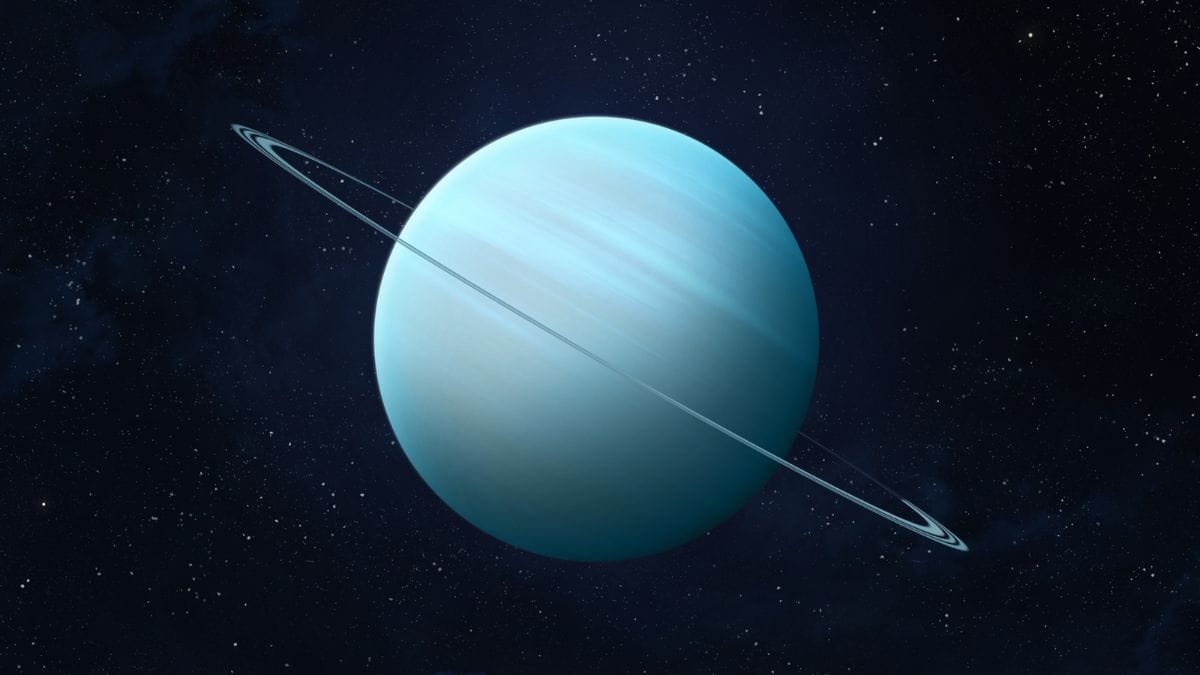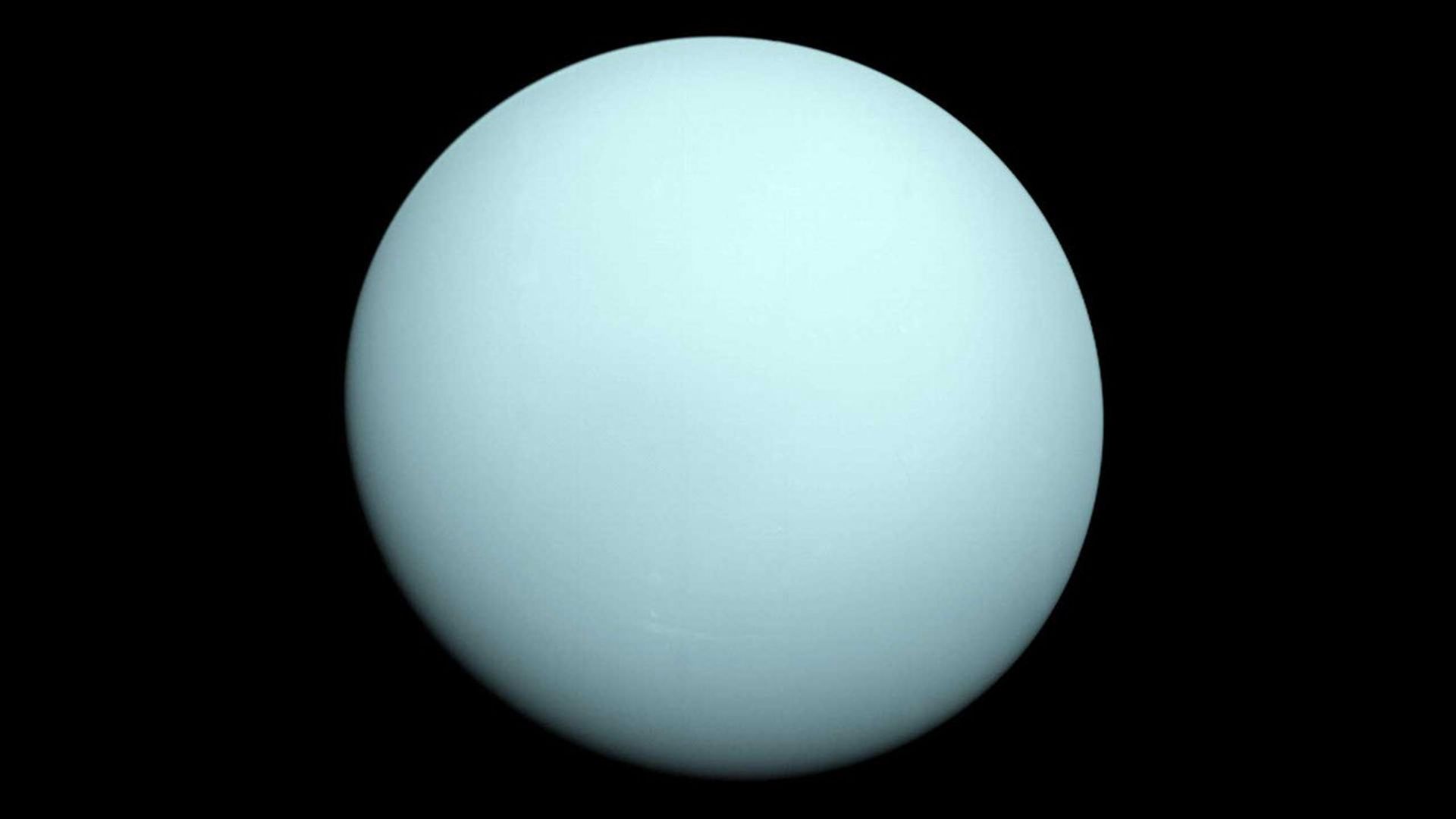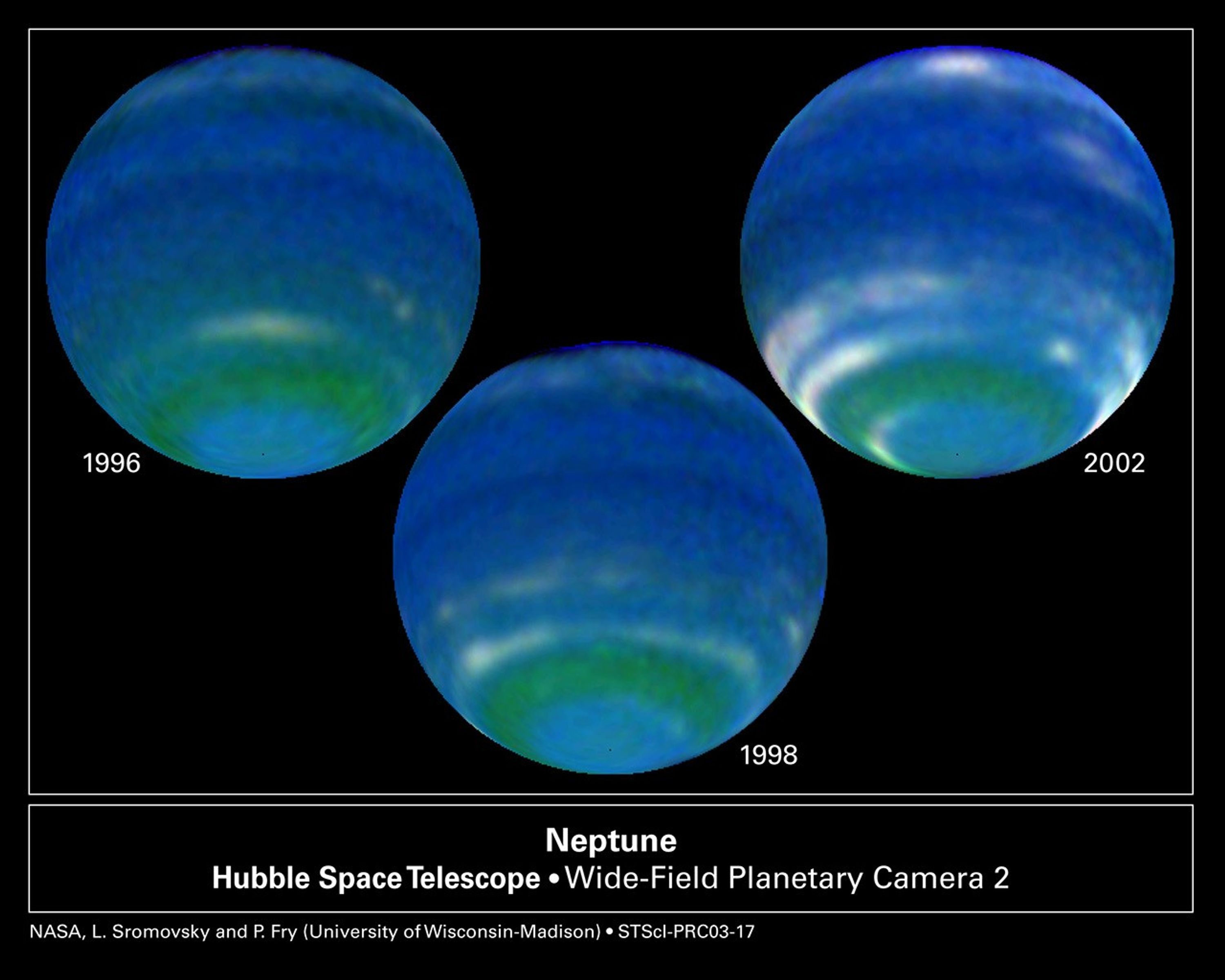
Imagine a world where one half basks in endless daylight for decades while the other endures perpetual night, all because of a dramatic cosmic twist. Uranus, the seventh planet from the Sun, stands out in our solar system with its extraordinary sideways spin, making it a fascinating subject for astronomers studying planetary behaviors. Recent observations from powerful telescopes like the Hubble Space Telescope and the James Webb Space Telescope reveal how this ice giant’s unique orientation drives some of the most bizarre weather patterns and atmospheric shifts ever seen. According to NASA’s comprehensive Uranus facts overview, updated in April 2025, this planet orbits the Sun at an average distance of 1.8 billion miles (2.9 billion kilometers), taking 84 Earth years to complete one trip, which sets the stage for its prolonged seasonal cycles.

This extreme setup isn’t just a quirk; it influences everything from raging storms to glowing auroras, offering clues about how planets evolve over billions of years. Scientists at NASA and the European Space Agency (ESA) have been tracking these changes through long-term programs, noting how the planet’s blue-green hue, caused by methane in its atmosphere, varies as sunlight angles shift. With wind speeds reaching up to 560 miles per hour (900 kilometers per hour), Uranus challenges our understanding of gas and ice giants, showing that even distant worlds can surprise us with dynamic activity.
But what exactly makes these seasons so wild, and how do they compare to the gentle shifts we experience on Earth? Let’s dive deeper to uncover the secrets behind Uranus’ tilted world.
What Makes Uranus’ Axial Tilt So Unique?
Uranus boasts an axial tilt of 97.77 degrees, meaning it essentially rolls on its side as it orbits the Sun, unlike Earth’s modest 23.5-degree lean that gives us balanced seasons. This near-90-degree angle (often rounded to 98 degrees in discussions) sets Uranus apart from all other planets in the solar system, where most spins are more upright relative to their orbital paths. As detailed in NASA’s Hubble monitoring report from March 2023, this tilt likely stems from a colossal impact billions of years ago, when an Earth-sized object slammed into the young planet, knocking it off-kilter and shaping its current form.
To visualize this, picture a spinning top that’s been bumped hard—Uranus rotates retrograde (opposite to most planets) every 17 hours and 14 minutes, but its poles point almost directly toward or away from the Sun at different points in its orbit. This configuration, confirmed through Voyager 2’s 1986 flyby and ongoing telescope data, results in polar regions receiving uneven sunlight distribution. For instance, while Earth’s tilt causes mild polar nights lasting months, Uranus’ setup amplifies this to extremes, affecting atmospheric circulation and heat balance.
Fun fact: Uranus is one of only two planets with retrograde rotation, the other being Venus, but Venus’ tilt is just 177 degrees, making its days backward without the sideways drama. Comparisons help here—think of Saturn’s 26.7-degree tilt causing visible ring shadows, but Uranus’ extreme angle makes its faint rings appear vertical from our view, as captured in recent James Webb Space Telescope images.
Scientists speculate this tilt also explains Uranus’ oddly low internal heat output, with core temperatures up to 9,000 degrees Fahrenheit (4,982 degrees Celsius), yet the planet radiates little warmth outward. According to ESA’s Hubble collaboration update from March 2023, the impact might have ejected much of the planet’s primordial heat, leaving it colder than Neptune despite similar compositions. This uniqueness draws researchers to propose future missions, like a dedicated orbiter, to probe deeper.
In brackets for clarity: Axial tilt (the angle between a planet’s rotational axis and its orbital plane) here is so severe that it flips the typical seasonal script, turning what we’d call north and south poles into equatorial-like zones during certain orbital phases.
How Does the Extreme Tilt Create Seasons on Uranus?
The extreme tilt of Uranus transforms its seasons into marathon events, where each pole experiences 42 years of continuous sunlight followed by 42 years of darkness, directly tied to its 84-year orbital period around the Sun. This happens because the planet’s rotational axis lies nearly in the plane of its orbit, so as Uranus travels, one hemisphere faces the Sun head-on for half the year (42 Earth years), while the other is shrouded in shadow. Observations from NASA’s June 2025 night sky notes on solar system seasons confirm this pattern, showing how sunlight drives atmospheric changes like increased cloud activity near equinoxes.

To break it down, seasons on Uranus aren’t driven by distance from the Sun—its nearly circular orbit keeps it at a consistent 19 astronomical units (AU, where 1 AU is Earth’s distance from the Sun)—but purely by the tilt’s geometry. During solstices, the Sun hovers directly over one pole, illuminating an entire hemisphere while plunging the opposite into prolonged winter, with temperatures dropping to 49 Kelvin (-224.2 degrees Celsius). This contrasts sharply with Earth’s seasons, where tilt causes shorter daylight variations.
A helpful comparison: On Earth, summer solstice means longer days, but on Uranus, it’s like an amplified version where “summer” lasts decades, allowing methane haze to build up and create bright polar caps. Hubble images from November 2022, as noted in NASA’s comparative Uranus views, show the north pole brightening as it approaches summer, with a cap of high-altitude aerosols forming due to sustained solar exposure.
Bullet points for key effects:
- Polar Lighting: One pole gets direct Sun for 42 years, heating the upper atmosphere and sparking storms.
- Equatorial Shifts: At equinoxes (every 42 years), sunlight hits the equator evenly, boosting wind patterns and cloud formation.
- Atmospheric Dynamics: Winds blow retrograde at the equator but prograde near poles, reaching 900 kilometers per hour, influenced by the tilt’s uneven heating.
Recent peer-reviewed research, such as a 2024 study modeling Uranus’ color changes, aligns with these observations, attributing brighter appearances during solstices to methane absorption variations. For complex data like wind speeds, imagine a chart plotting velocity against latitude—equatorial winds oppose rotation, while polar ones align, creating zonal bands visible in telescope spectra.
What Are the Seasons Like on Uranus Compared to Earth?
Seasons on Uranus are nothing like Earth’s four balanced cycles; instead, they feature ultra-long summers and winters that reshape the planet’s atmosphere over decades. On Earth, seasons last about three months due to our 23.5-degree tilt, but Uranus’ 97.77-degree lean means each “season” spans 21 years per traditional phase—though really, it’s two mega-seasons of light and dark per pole over 84 years. As explained in NASA’s December 2024 Hubble outer planets tracking report, approaching equinox brings dynamic weather, with storms and bright clouds emerging as sunlight equalizes.

Picture this: During Uranian summer, the sunlit hemisphere warms slightly, though still frigid at -224 degrees Celsius average, causing methane to rise and form hazy layers that give the planet its vivid blue-green color by absorbing red light. In contrast, the dark winter side cools further, potentially condensing gases into deeper clouds, reducing visibility of features like the rare dark spots seen by Voyager 2.
Fun example: If you lived on Uranus’ equator (ignoring the crushing pressure), you’d see the Sun circle low on the horizon during equinox, but at poles, it’s either eternal day or night for 42 years—far wilder than Earth’s polar circles’ six-month shifts. This leads to unique phenomena, like auroras not aligned with poles due to the magnetic field’s 59-degree offset from the rotational axis.
According to ESA’s December 2024 Hubble imagery release, recent views show the southern hemisphere transitioning post-equinox, with fading polar caps as seasons evolve. Measurements show atmospheric density around 1.3 grams per cubic centimeter at the cloud tops, denser than Earth’s but thin for a giant (in brackets: atmospheric density measures mass per volume, indicating how packed the gases are).
For visualization, refer to diagrams of orbital paths with tilt overlays, showing sunlight incidence angles varying from 0 to 90 degrees across latitudes.
How Do Uranus’ Rings and Moons Interact with Its Tilted Seasons?
Uranus’ 13 faint rings and 28 moons experience the tilt’s effects, with rings appearing edge-on from Earth during equinoxes, making them nearly invisible except in infrared. The rings, composed of dark, golf-ball-sized chunks and dust, orbit in the equatorial plane, which due to the tilt, aligns almost perpendicular to the orbital path. As per NASA’s 2025 Uranus facts update, this setup causes seasonal shadowing, where rings cast long shadows on the planet during solstices, potentially cooling certain atmospheric bands.
Moons like Miranda and Ariel, inner icy bodies half rock and half water ice, follow tilted orbits too, leading to their own extreme day-night cycles synchronized with Uranus’ seasons. For instance, outer moons, possibly captured asteroids, might see varying solar radiation, affecting surface ices.
Comparison: Unlike Saturn’s rings that shimmer year-round, Uranus’ dim rings (zeta to mu, increasing outward) brighten in forward-scattered light near equinox, as Hubble captured in 2007 but relevant to ongoing cycles.
Bullet points on interactions:
- Ring Visibility: Tilt makes rings face-on or edge-on from Sun, altering dust dynamics.
- Moon Seasons: Moons’ tilts mirror Uranus’, causing 42-year polar exposures.
- Gravitational Pulls: Tilt may influence moon formations, with some shepherding ring particles.
Recent studies suggest the tilt’s origin impact could have formed the rings from debris. In brackets: Orbital resonance (when periods align in ratios) keeps rings stable despite seasonal perturbations.
What Have Recent Space Observations Revealed About Uranus’ Seasons?
Modern telescopes have unveiled Uranus’ seasonal secrets, showing increased storm activity as it nears equinox in 2028. Hubble’s Outer Planet Atmospheres Legacy (OPAL) program, running since 2014, tracks cloud morphology, revealing brighter features and a expanding polar cap in the northern hemisphere. From NASA’s 2023 Hubble weather report, winds and clouds ramp up during seasonal transitions, with a great dark spot appearing sporadically.
James Webb Space Telescope’s 2023 near-infrared images display the north polar cap glowing with methane ice, dim inner rings, and nine moons, highlighting tilt-driven haze buildup. These observations confirm microwave variations tied to deep tropospheric changes, as solstices maximize brightness.
Fun fact: Voyager 2’s 1986 flyby caught Uranus in southern summer, seeing few clouds, but now in northern approach, activity surges—proof of seasonal evolution.
Peer-reviewed work, like the 2024 modeling of color cycles in Monthly Notices of the Royal Astronomical Society, matches data, showing magnitude shifts from 5.38 to 6.03 due to aerosol layers. For figures, wind speed charts show peaks at 560 mph, with uncertainty ±50 mph across sources.
Why Is Studying Uranus’ Tilt Important for Understanding Other Planets?
Exploring Uranus’ tilt helps unravel mysteries of planetary formation and exoplanets, many of which show odd tilts suggesting impacts are common. By comparing to Neptune’s upright 28-degree tilt yet similar composition, scientists infer collision histories shape heat retention and magnetospheres. As noted in NASA’s 2022 Uranus imagery analysis, the offset magnetic field (tilted 60 degrees) twists into a corkscrew, influenced by rotation, offering insights into dynamo processes.

This knowledge aids future missions, like proposed Uranus probes by NASA and ESA, to measure atmospheric density (1.3 kg/m³ at clouds, with brackets: kg/m³ is kilograms per cubic meter, a mass-volume ratio) and search for subsurface oceans.
Ultimately, Uranus’ extremes highlight solar system diversity, prompting questions about life in harsh environments.
Conclusion
Uranus’ dramatic 97.77-degree axial tilt revolutionizes its seasons, creating 42-year cycles of light and dark that drive atmospheric storms, color changes, and unique polar features, all verified through decades of NASA and ESA observations. This sideways world not only contrasts with Earth’s mild shifts but also teaches us about cosmic collisions and planetary resilience.
Sources
European Space Agency. (2023, March 23). Hubble monitors changing weather and seasons on Jupiter and Uranus. ESA. https://www.esa.int/Science_Exploration/Space_Science/Hubble_monitors_changing_weather_and_seasons_on_Jupiter_and_Uranus
European Space Agency. (2024, December). Hubble celebrates a decade of tracking the outer planets. ESA Multimedia. https://www.esa.int/ESA_Multimedia/Images/2024/12/Hubble_celebrates_a_decade_of_tracking_the_outer_planets
Irwin, P. G. J., Fletcher, L. N., Toledo, D., Teanby, N. A., Orton, G. S., Wong, M. H., Roman, M. T., Pérez-Hoyos, S., James, A., & Dobinson, J. (2024). Modelling the seasonal cycle of Uranus’s colour and magnitude, and comparison with Neptune. Monthly Notices of the Royal Astronomical Society, 527(4), 11569–11586. https://doi.org/10.1093/mnras/stad3761
NASA. (2023, March 23). Hubble monitors changing weather and seasons at Jupiter and Uranus. NASA Science. https://science.nasa.gov/missions/hubble/hubble-monitors-changing-weather-and-seasons-at-jupiter-and-uranus/
NASA. (2024, December 9). NASA’s Hubble celebrates decade of tracking outer planets. NASA Science. https://science.nasa.gov/missions/hubble/nasas-hubble-celebrates-decade-of-tracking-outer-planets/
NASA. (2025a, April 21). Uranus: Facts. NASA Science. https://science.nasa.gov/uranus/facts/
NASA. (2025b, May 30). June’s night sky notes: Seasons of the solar system. NASA Science. https://science.nasa.gov/solar-system/skywatching/night-sky-network/jun2025-night-sky-notes/
NASA. (n.d.-a). Uranus (Nov. 2014 and Nov. 2022). NASA Science. https://science.nasa.gov/asset/hubble/uranus-nov-2014-and-nov-2022/
NASA. (n.d.-b). Uranus. NASA Science. https://science.nasa.gov/uranus/
NASA. (n.d.-c). Tracking the rotation of Uranus. NASA Science. https://science.nasa.gov/asset/hubble/tracking-the-rotation-of-uranus/
📌 Frequently Asked Questions
Why is Uranus tilted on its side?
Uranus’ extreme tilt of 97.77 degrees likely resulted from a massive collision with an Earth-sized protoplanet about 4 billion years ago, altering its spin. According to NASA’s Uranus facts page, this event explains the retrograde rotation and low heat emission.
How does Uranus’ tilt affect its seasons?
The tilt causes each pole to face continuous sunlight for 42 years and darkness for another 42, leading to extreme atmospheric changes. As per NASA’s 2023 Hubble report, this results in heightened storms during transitions.
What are the seasons like on Uranus?
Seasons are prolonged, with hemispheres in summer or winter for decades, featuring bright polar caps and high winds. Observations from NASA’s 2025 seasonal notes show dynamic clouds at equinoxes.
How long is a season on Uranus?
Each traditional season lasts about 21 years, but poles experience 42-year light/dark cycles due to the 84-year orbit. This is confirmed in NASA’s 2022 imagery.
Why does Uranus have extreme seasons?
Its 97.77-degree tilt makes sunlight distribution uneven, unlike Earth’s balanced tilt. ESA’s 2023 update links this to variable cloud and wind patterns.
What is the axial tilt of Uranus?
Uranus has an axial tilt of 97.77 degrees, nearly sideways. This figure comes from NASA’s Uranus overview, updated in 2025.
Does Uranus have seasons?
Yes, but they are extreme due to tilt, with long periods of daylight and night. Hubble data in NASA’s 2024 report shows seasonal color shifts.
Why is Uranus the only planet on its side?
A ancient impact likely caused it, unique in the solar system. NASA facts note this distinguishes it from upright planets like Neptune.
How does Uranus’ rotation work?
It rotates retrograde every 17 hours, tilted 97.77 degrees. As per NASA’s rotation tracking, this affects magnetosphere and auroras.
What caused Uranus to tilt?
A collision with a large protoplanet is the leading theory. Simulations referenced in NASA’s 2025 facts support this, explaining the tilt and rings.
Leave a Reply